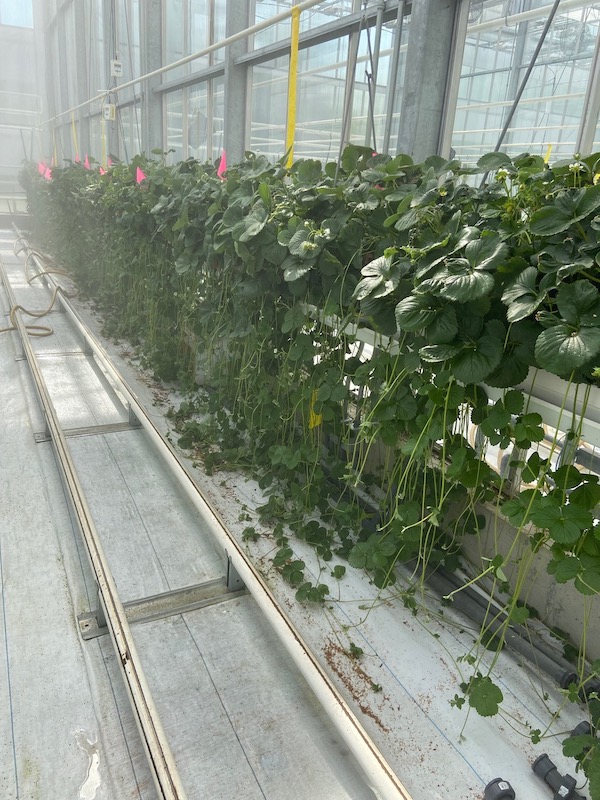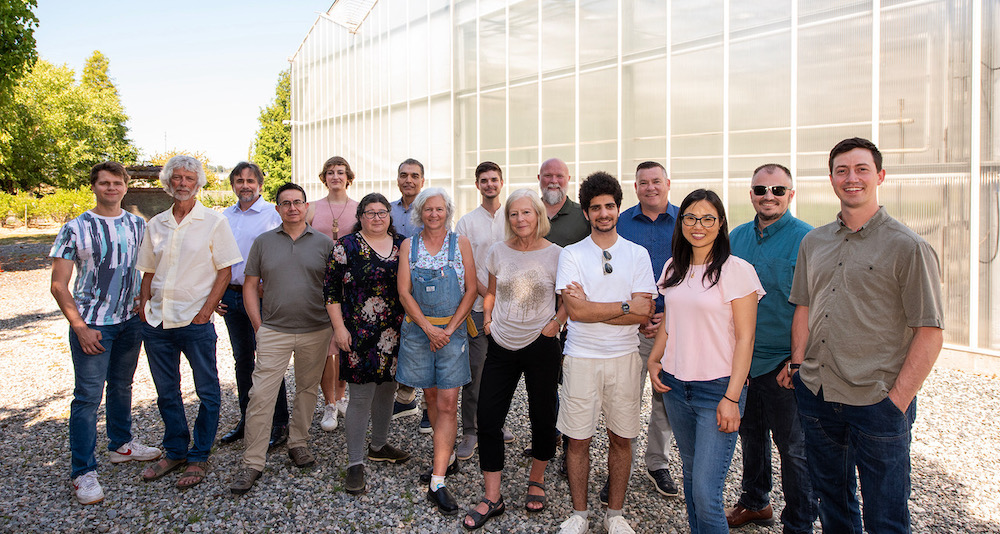There is no doubt that berries are one of the most challenging crops for Canadian producers to grow out-of-season but that hasn’t stopped some producers from trying.
“Seeing how all the berries were coming from faraway places like central Mexico or central California, we thought that we could grow a better tasting berry and extend our growing season here using a greenhouse,” said David Ryall, an agriculture specialist with Star Produce, one of Canada’s largest fruit and vegetable producers.
Ryall is Star’s project lead in a partnership with Deborah Henderson, Director of the Institute for Sustainable Horticulture at Kwantlen Polytechnic University (KPU). Her research team joined forces with scientists from Simon Fraser University (SFU) as well as several industry partners to develop an advanced greenhouse system that uses AI technology to lower the cost of producing strawberries and blackberries while reducing the use of pesticides.
The project is funded through the Weston Family Foundation’s Homegrown Innovation Challenge, an initiative designed to bring together Canadian growers, academics, engineers, scientists, entrepreneurs, government and other interested parties to develop innovative, practical, reliable ways to produce berries out-of-season and at scale.
During its Shepherd phase (the second of three phases) 11 teams were awarded up to $1 million each to develop small-scale, proof-of-concept solutions to the berry production problem over an 18-month period.
“The goal was to get into the expanding berry market…and strawberries are the biggest part of that market,” Ryall said.
But growing strawberries in greenhouses led to some predictable problems.
“We created a Club Med for plants, but it was also a Club Med for bugs,” he said, mentioning aphids, thrips, white flies and mites by name. “All those seemed to grow rather well with the strawberries.”
That’s no small problem for a grower who prefers to use biological controls. Enter Henderson and her team.

“We have the greenhouse and the horticultural experience and SFU is developing the clean energy storage piece,” she said. “We had two big objectives for our proposal: to head for carbon neutrality and to achieve pesticide-free greenhouse production of strawberries and blackberries.”
Henderson’s project integrates several state-of-the-art technologies, all with the goal of moving towards plant-led production that uses feedback from plants to optimize things such as climate control and pest management. It will even be able to predict yields and alert producers to how many workers they’ll need for harvest and when.
“Greenhouse technology is already well used and, for the most part, it’s well understood,” she said. “New technology is coming very fast for automating a lot of those manual tasks that will make growing more efficient and cost effective.”
Those technologies also promise to deliver a smaller carbon footprint.
Majid Bahrami, a professor of Mechatronic Systems Engineering at SFU and an alternative energy conversion efficiency expert, is developing a thermal energy storage and heat pumping system that doesn’t require electricity, has few moving parts and runs on waste heat produced by the greenhouse.
Although Henderson’s greenhouse generates heat via solar panels and a geothermal or ground-sourced heat pump, there hasn’t been a cost-effective way to store it.
“In the summer, our geothermal is pumping out heat but we’re not using it,” Henderson said. “So it’s waste heat. The technology that Majid has developed is called a flow battery. It can go from cool to heat or heat to cool, and it can go back and forth. So you can store heat in summer then use it in winter or you can use [the technology] in summer to cool the greenhouse.”
Bahrami’s team is also working on technology to capture carbon dioxide from the air and bring it into the greenhouse.
“Right now, natural gas is cheap. We burn it for heat. In a greenhouse, we also use CO2 because crops respond well to it,” Henderson said. “One of the challenges when we stop burning fossil fuels is we lose that source of CO2.”
A year into the 18-month Shepherd phase, Henderson’s team has 600 strawberry plants and 25 blackberry plants growing in the greenhouse at KPU with roughly 100 more blackberries in a heat and light equipped poly house.
If Henderson’s project progresses to the Scaling phase, the team will be awarded up to $5 million to demonstrate over a three-year period that its system works at farm scale. For that phase, production will move to 2,000 square metres of greenhouse space at Star Produce.
“All of the technology that we’ve been using has been on 600 plants and we’re going to be able to test it on a much larger scale,” Henderson says.
Henderson notes that the technologies her team have been testing are still a few years away from commercialization. For Ryall, the viability of those technologies will ultimately come down to the bottom line. He speaks from his 50 years of experience in the industry.
“It’s one thing to grow a crop but, at the end of the day, you have to be profitable. We’re kind of reaching that point for [strawberry] production from the middle of March to the middle of November but, if we want to extend that season, we need to do some more homework.”










